French Furniture: A Royalzig Guide to Iconic French Furniture Styles
Introduction
In the world of luxury interiors, few design traditions possess the timeless elegance and aristocratic lineage of French furniture. From the rustic warmth of countryside craftsmanship to the opulence of palatial décor, French furniture encapsulates a journey through royal courts, artistic revolutions, and enduring aesthetic values. At Royalzig, we pride ourselves on reviving these legacies with masterful wood carving, historic precision, and a vision worthy of discerning collectors and modern residences seeking unparalleled grandeur.
What Defines French Furniture?
French furniture is not just decoration—it’s a refined expression of art, culture, and history. Over centuries, it has evolved through distinct periods that mirrored the political, social, and artistic shifts of France. These transformations gave rise to iconic furniture styles recognized for their signature carvings, regal ornamentation, classic motifs, and unparalleled craftsmanship by master ébénistes (cabinetmakers). Whether it is the elegance of Louis XVI’s Neoclassicism or the romantic curves of Rococo Louis XV, each style represents an era of sophistication, whispering tales of its time.
A Living Timeline: The Historical Tapestry of French Furniture Styles
Gothic & Renaissance (15th–16th centuries):
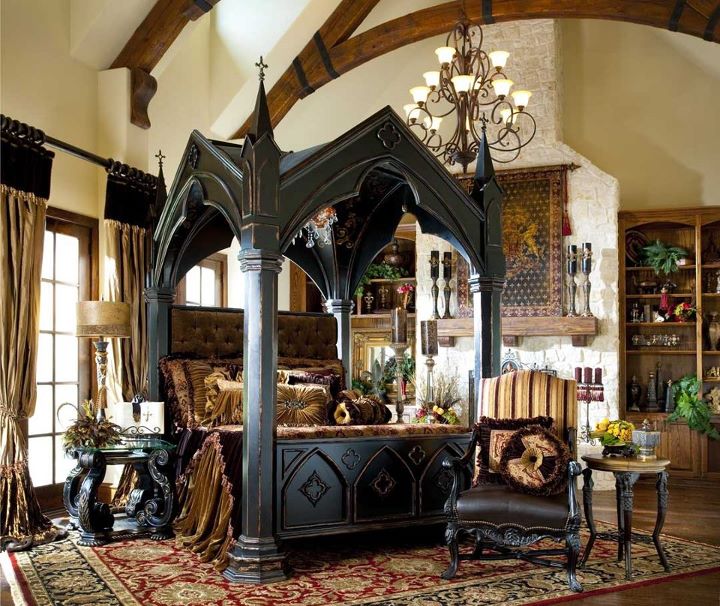
Characterized by Gothic arches, heavy proportions, and symbolic reliefs reflecting ecclesiastical influence. Early Renaissance pieces featured classical motifs rediscovered from antiquity, intricate linenfold panels, and ornate tracery, primarily crafted from dark, noble oak or walnut.
Louis XIII (1610–1643):
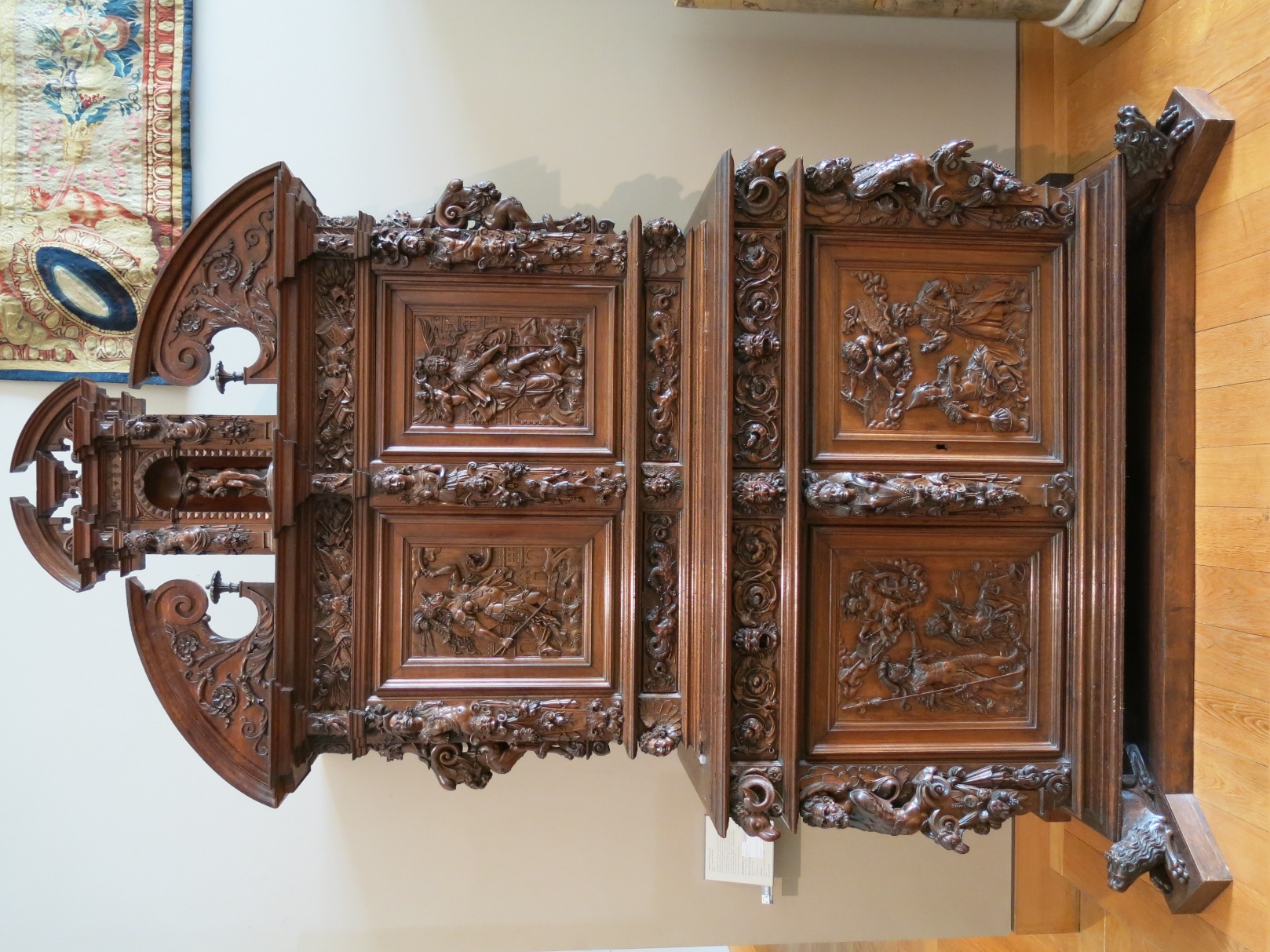
A blend of Renaissance solidity and nascent Baroque drama, Louis XIII furniture embraced a certain austere power. Bulky silhouettes, distinctive turned legs (often melon-shaped), and geometrical carvings dominated, frequently adorned with rich velvets or sumptuous tapestries. Key pieces include imposing Louis XIII armoires and chairs defined by their straight lines and robust presence.
Key Characteristics of Louis XIII Style:
- Geometric shapes and thick, substantial silhouettes conveying strength.
- Distinctive melon-shaped turnings on legs and stretchers.
- Upholstered chairs with high backs and tall, imposing armoires for storage.
Louis XIV (1643–1715):
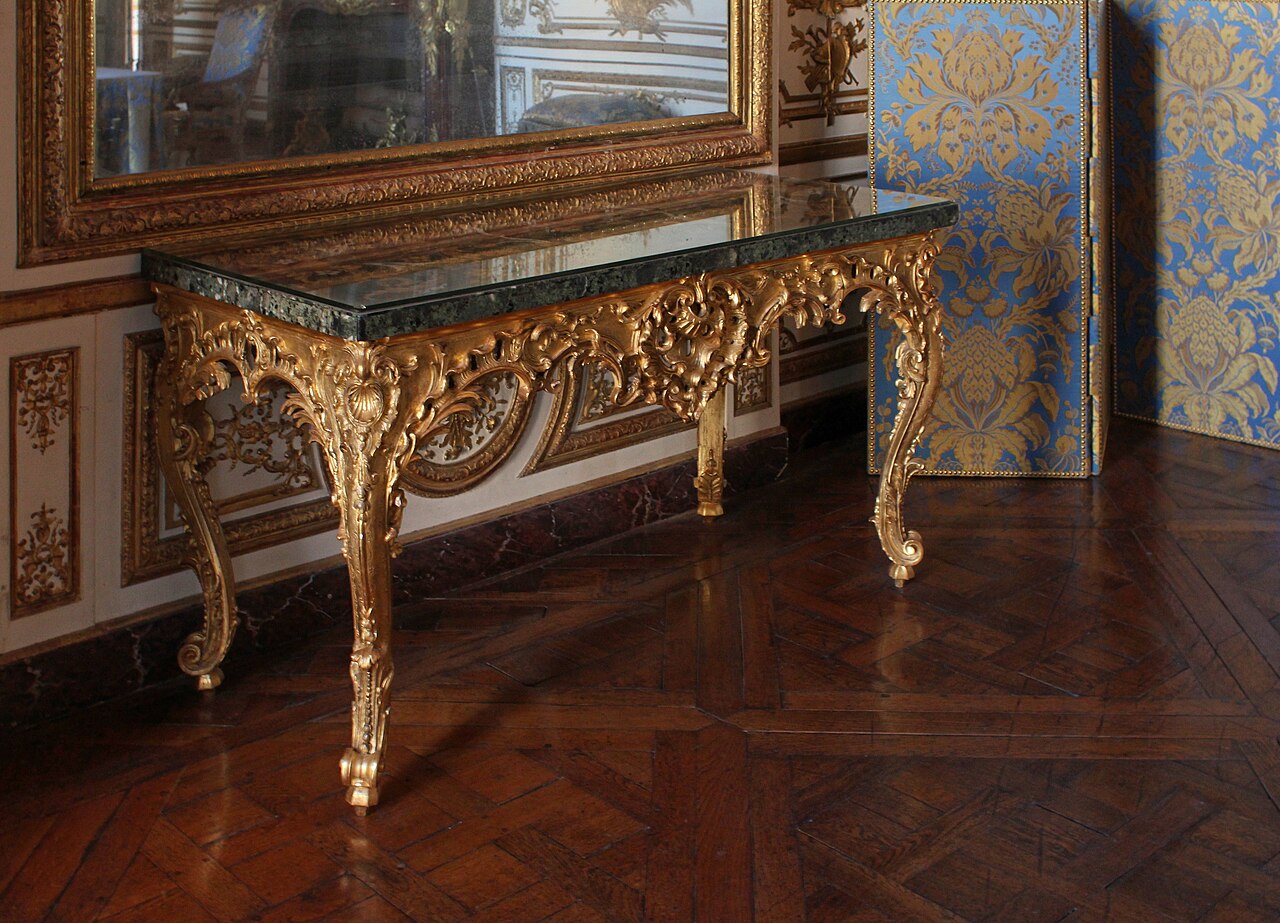
The epitome of French Baroque grandeur, the Sun King's style was theatrical, imposing, and meticulously symmetrical. Gold leaf detailing, heroic mythological scenes, elaborate marquetry (exemplified by masters like André-Charles Boulle), and large-scale furniture were crafted expressly for the lavish halls of Versailles. Think majestic Louis XIV cabinets, bombé commodes, and monumental canopy beds designed to awe.
Key Characteristics of Louis XIV Style:
- Monumental scale and heavy proportions designed for vast palaces.
- Rich ornamentation: acanthus leaves, masks, swags, sunbursts (the King's emblem).
- Strict symmetrical composition and flamboyant veneers or Boulle marquetry.
Regence (1715–1723):
A graceful transitional style marked by softened symmetry and fluid lines. The heavy austerity of Louis XIV began to give way to playful asymmetry, elegant shell motifs (rocaille), delicate scrolls, and lighter forms—an elegant prelude to the full flourish of Rococo. Regence consoles and bombe commodes gained prominence, hinting at the intimacy to come.
Louis XV (1723–1774):
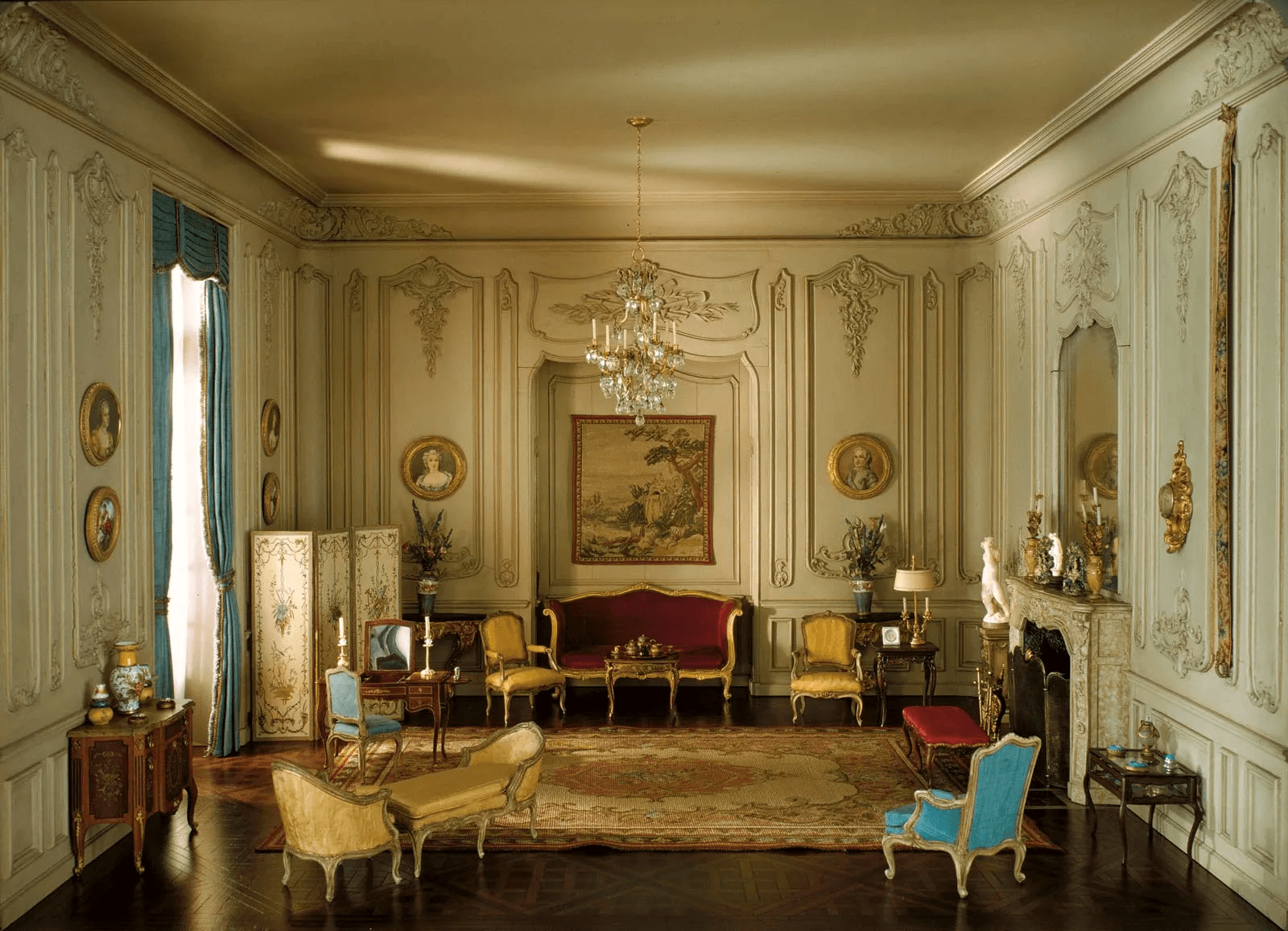
The Rococo era unfolded with an emphasis on movement, nature, and intimate luxury. Sinuous lines, graceful cabriole legs (often terminating in delicate scrolls or pied de biche), and exquisite nature-inspired carving brought a sense of feminine allure and comfort. Furniture became more personal, scaled for salons and boudoirs, designed for comfort and leisure. Iconic forms include the enveloping Louis XV bergère, elegant fauteuils, serpentine commodes, and marquetry secretaire desks adorned with floral marquetry and ormolu mounts.
Key Characteristics of Louis XV Style:
- Graceful curvature and serpentine shapes embracing natural forms.
- Signature Rocaille motifs: shells, vines, floral bouquets, rocaille (rockwork).
- Luxurious textiles: brocade, damask, silk in harmonious palettes.
- Examples: iconic bergères for repose, bombe chests, intricate marquetry desks.
Louis XVI (1774–1793):
![]()
Neoclassicism emerged as a refined reaction to Rococo's exuberance. Clean, geometric lines replaced curves, drawing inspiration directly from newly discovered Greco-Roman ruins. Fluted legs, rosettes, laurel wreaths, urns, and strict symmetry defined this elegant, intellectual style. Signature items include the supremely functional Louis XVI writing desks (bureaux plats), commodes with stately marble tops, and chairs featuring delicate medallion backs.
Key Characteristics of Louis XVI Style:
- Tapered, fluted legs and precise architectural detail inspired by antiquity.
- Elegant medallion chair backs and classical friezes adorning case pieces.
- Neatly proportioned, intellectual style exuding refined order.
- Signature items: elegant writing desks, marble-topped commodes, graceful dining chairs.
Directoire (1795–1799):
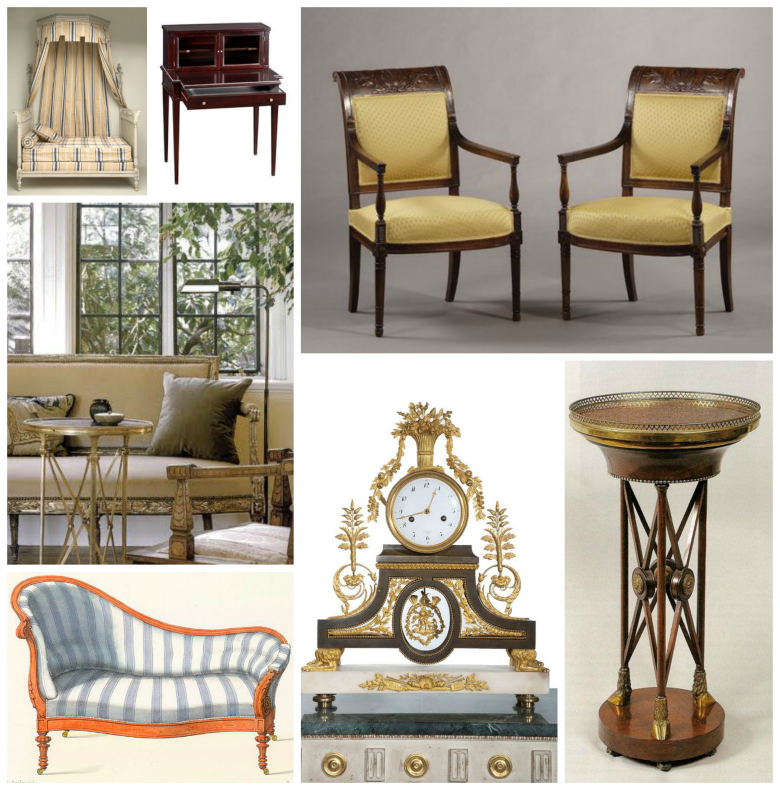
Bridging the Louis XVI and Empire periods, Directoire style emphasized republican simplicity and minimalism. Rectilinear forms, patriotic symbols (fasces, pikes), and clean, understated ornamentation were common, reflecting the austerity of the post-Revolution era. Directoire sideboards and daybeds were popular expressions of this pragmatic elegance.
Key Characteristics of Directoire & Louis Philippe:
- Linear profiles and clean lines emphasizing function and republican virtue (Directoire) or bourgeois comfort (Louis Philippe).
- Functional yet sophisticated, often made of lighter fruitwoods or mahogany with minimal carving.
- Includes practical sideboards, roll-top desks, and comfortable beds.
Empire (1804–1815):

Napoleon’s influence introduced imperial grandeur infused with classical mythology and militaristic symbolism. Furniture was bold, architectural, and strictly symmetrical, utilizing dark, imposing woods like mahogany, accented with gilded bronze mounts (ormolu), and motifs like sphinxes, imperial eagles, bees, and laurel crowns. Notable examples include imposing Empire sleigh beds (lits en bateau), monumental armoires, and rigidly formal ceremonial chairs.
Key Characteristics of Empire Style:
- Power and discipline reflected in strong, rectilinear silhouettes.
- Prominent use of ormolu (gilded bronze mounts) for contrast and luxury.
- Egyptian and Roman motifs, lion’s paws, and triumphal wreaths symbolizing imperial power.
- Sleigh beds, monumental armoires, and formal ceremonial chairs.
Restoration & Louis Philippe (1815–1848):
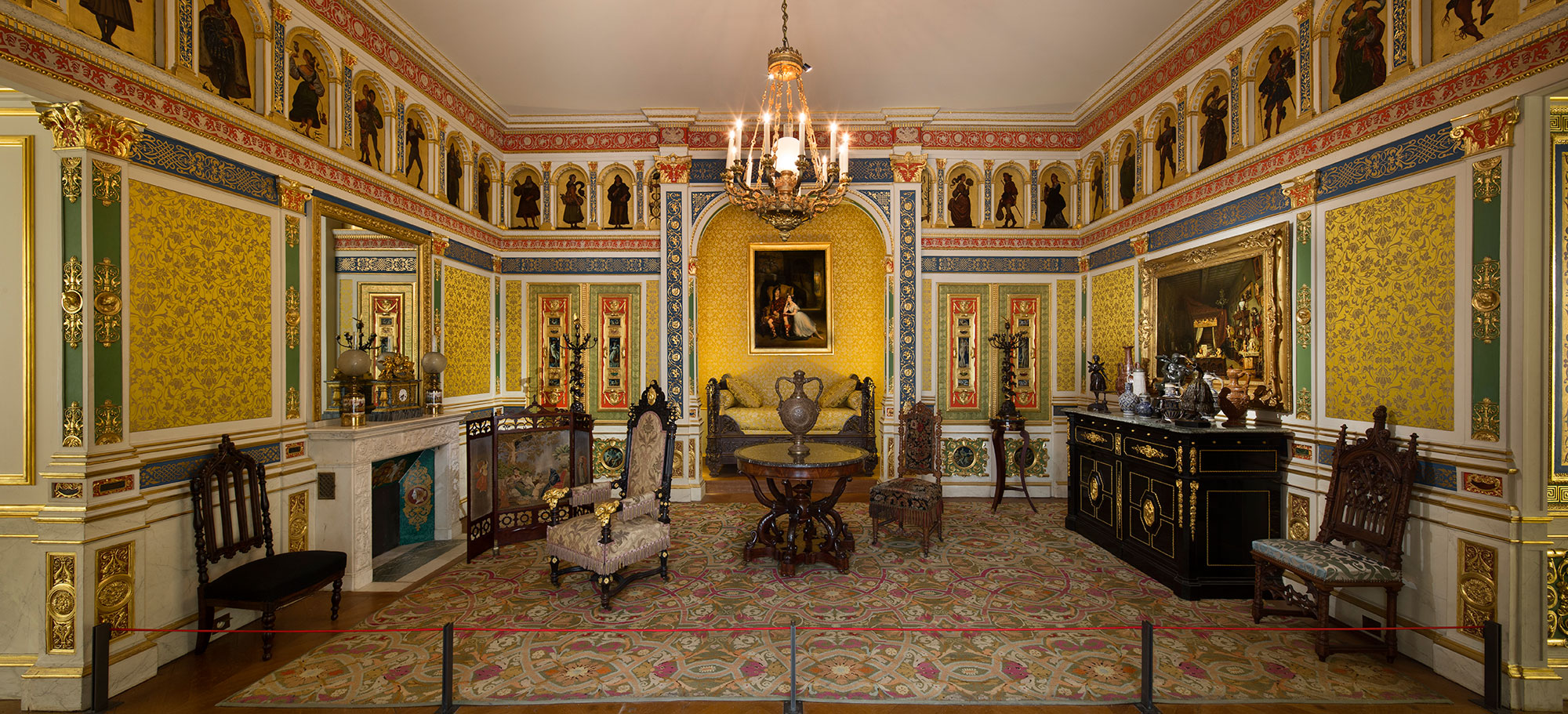
Furniture evolved towards comfort and practicality for the rising bourgeoisie. Decorative flourishes persisted but were less ostentatious, featuring more rounded corners and simpler lines reflecting the changing times. Louis Philippe buffets with their characteristic bombe shape and round dining tables are characteristic of this accessible yet sophisticated era.
French Provincial (17th–18th centuries):
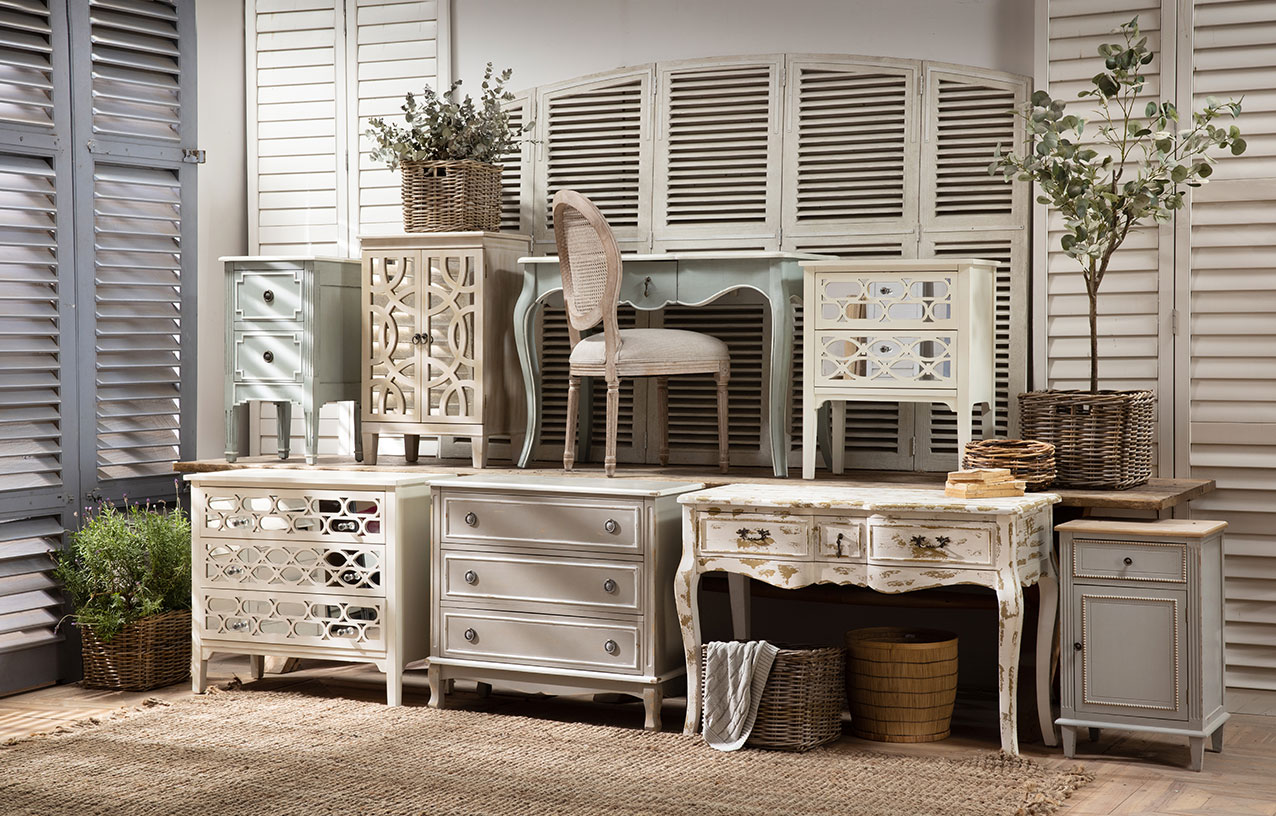
Charming rural interpretations of Parisian court styles. French Country furniture focused on comfort, enduring simplicity, and rustic charm, often featuring local woods like oak or fruitwood, painted finishes in earthy or soft pastel palettes, scalloped carvings, and woven rush seats. Popular pieces include sturdy ladder-back chairs, welcoming Provincial buffets, and solid farmhouse tables, embodying the warmth of the countryside.
Key Characteristics of French Country (Provincial):
- Handcrafted from native oak, cherry, or walnut, chosen for durability.
- Earthy, pastel tones and hand-painted finishes reflecting local traditions.
- Practical, comfortable silhouettes often featuring softened cabriole legs and scalloped aprons.
- Woven rush seats and floral or toile upholstery adding pastoral charm.
How to Identify Authentic French Furniture
Joinery: Look for traditional techniques like pegged mortise-and-tenon joints and hand-cut dovetails – hallmarks of enduring craftsmanship.
Wood Selection: Native woods such as walnut, oak, cherry, or beech predominate; mahogany became prominent later (Empire).
Signs of Aging: A genuine patina, gentle wear consistent with use, and subtle, natural color shifts are true indicators of age and authenticity.
Carvings and Ornamentation: Detailed hand-carved reliefs reflecting era-specific motifs, exhibiting depth and fluidity impossible to fully replicate by machine.
Brasswork & Mounts: Hand-cast and chased drawer pulls, escutcheons, and ormolu mounts reveal the meticulous attention of true artisans.
Why French Furniture is Still Revered Today
French furniture remains a cornerstone of high-end design because of its ability to blend functionality with unmatched beauty and profound historical resonance. Each piece, whether stately or humble, tells a story—from the absolute power of the Sun King's court to the pastoral charm of Provençal life. Designers and connoisseurs around the world, including the Royalzig team, are perpetually drawn to the narrative richness and masterful artistry of these pieces. We honour this legacy by adapting them for modern settings, ensuring their original soul and exquisite craftsmanship shine through in today's most refined residences.
Royalzig’s Custom Made French Furniture: A Tribute to Timeless Luxury
At Royalzig, we specialize in reviving these extraordinary styles with a touch of personalization and modern elegance. Our master artisans, working in dedicated ateliers, craft each piece using traditional methods, luxurious hand carvings that capture every historic nuance, and only the finest, sustainably sourced premium woods. Whether it's a lavish Louis XV bergère upholstered in rich, contemporary damask or heritage silk, a charming Provincial buffet with authentic hand-painted detail, or a supremely elegant Neoclassical Louis XVI writing desk with flawless marquetry, our pieces are conceived to bring the enduring French legacy into the heart of the 21st-century luxury abode.
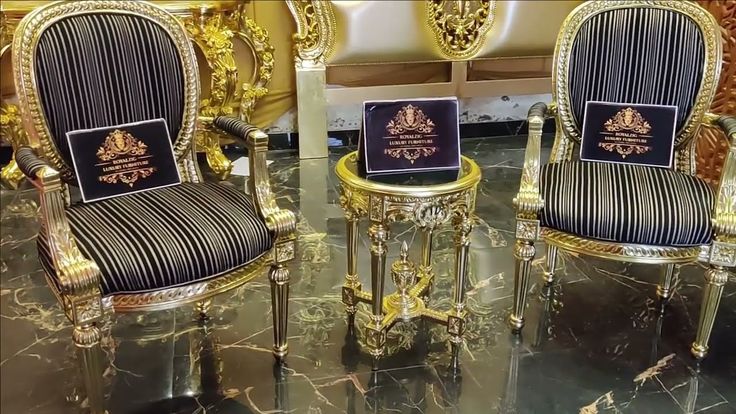
We also offer bespoke options tailored to your exacting taste—from selecting the perfect wood grain and carving motifs to choosing distinctive upholstery fabrics and bespoke finishes—ensuring that each luxury and classic furniture item becomes a harmonious chapter in your own unique interior narrative.
French Furniture vs. Normal Carved Furniture: Beyond the Carving
While all carved furniture showcases skill, true French-style furniture embodies a historical and artistic philosophy. It's the difference between a word and a poem—both use language, but one is crafted to evoke a deeper emotion and tell a richer story. The table below illustrates the distinctions that elevate a piece from simply "carved" to a "French masterpiece."
Comparison: French Furniture vs. Normal Carved Furniture
| Feature | French Furniture (The Royalzig Standard) | Normal Carved Furniture |
|---|---|---|
| Philosophical Roots | Born from a specific historical epoch (e.g., Louis XV, Empire) and the pursuit of l'art de vivre—the art of living. | Often driven by trend, function, or decorative appeal without a deep narrative. |
| Design & Proportion | Governed by strict, timeless rules of balance, symmetry (or intentional asymmetry), and architectural proportion. | Proportions can be arbitrary, sometimes sacrificing harmony for size or visual impact alone. |
| Artistic Intent | Carving is integral to the design; it flows from the structure. Motifs are symbolic (e.g., shells, acanthus) and tell a story. | Carving is often an "add-on" or appliqué, serving a purely decorative purpose. |
| Construction & Craft | Employs traditional joinery like mortise-and-tenon, designed for centuries of use. The unseen structure is as important as the seen. | Often relies on modern methods like screws, staples, and dowels for efficiency and cost-saving. |
| Material Philosophy | Uses premium, solid hardwoods (e.g., oak, walnut, cherry) selected for stability, grain, and ability to hold fine detail. | Frequently uses engineered wood, veneers over lesser wood, or softer woods prone to dents and wear. |
| Uniqueness & Value | Inherently bespoke or limited. A RoyalZig piece is a one-of-a-kind heirloom, increasing in sentimental and artistic value. | Often mass-produced or made in large batches, leading to depreciation as a mere consumer good. |
| Function & Experience | Designed to create an atmosphere. It elevates a room's energy, offering a daily sensory and aesthetic experience. | Primarily serves a utilitarian purpose—to hold, store, or display. The emotional component is secondary. |
| Longevity & Legacy | Built to be a multi-generational legacy piece, aging with a dignified patina that adds to its character. | Built with a limited lifespan in mind, often succumbing to trends or physical wear within a decade or two. |
Frequently Asked Questions
-
1. What is the "secret ingredient" that makes French furniture so timeless?
It’s a blend of art and soul. Beyond the exquisite woods and gilding, it's the unwavering commitment to l'art de vivre (the art of living). Each piece is designed not just for function, but to elevate daily life into an aesthetic experience, creating an atmosphere of elegance and grace that never goes out of style.
-
2. I love the look, but will an ornate Louis XV piece overwhelm my modern home?
Not at all. The key is the "accent piece" philosophy. A single, beautifully carved Louis XV console or a Régence-inspired mirror can create a stunning focal point that adds depth, history, and a touch of drama to a contemporary space. It’s about curated contrast, not a period replica.
-
3. Is "French Provincial" the same as rustic or shabby chic?
While often grouped, they are distinct. True French Provincial furniture reflects the refined styles of Paris, interpreted by skilled country craftsmen with a focus on solid woods and practical elegance. It's more robust and less ornate than its Parisian cousins, and far more structured and intentional than the distressed, "shabby chic" aesthetic.
-
4. How do I distinguish a Louis XV piece from a Louis XVI piece?
Think "Curves vs. Geometry." Louis XV is the era of the curve—asymmetrical rococo scrolls, cabriole legs, and naturalistic motifs like shells and flowers. Louis XVI, influenced by newly discovered Pompeii, returned to symmetry, straight lines, fluted legs, and Greco-Roman architectural details.
-
5. Can Royalzig create a piece that blends different French styles?
Absolutely. This is where true customization shines. Imagine the romantic curves of Louis XV married to the geometric inlay of Art Deco, or the rustic charm of Provincial built with the exquisite proportions of Louis XVI. We excel at creating hybrid heirlooms that reflect your unique taste.
-
6. Why is hand-carved solid wood so crucial for authentic French furniture?
Mass-produced molding can never capture the soul and depth of hand-carving. The subtle variations, the undercutting that creates shadows, and the life-like flow of a hand-tooled floral motif are what give antique French furniture its character. We use this same mastery to ensure your piece has a soul, not just a shape.
-
7. What makes a French Empire piece a "statement of power"?
French Empire style, under Napoleon, was designed to impress. It's bold, monumental, and symbolic. Think gleaming ormolu mounts, dark mahoganies, and motifs like eagles, sphinxes, and laurel wreaths that directly reference imperial glory and classical empires. It’s furniture that commands a room.
-
8. I have a specific wood in mind. Can you work with woods other than oak or walnut?
Without a doubt. While traditional French styles often used native woods like oak and walnut, or imported mahogany for Empire, our craft is defined by the material. We can work with a wide range of fine woods, from rich cherry to elegant maple, tailoring the species to achieve the desired color, grain, and durability for your vision.
-
9. How does the "Art of the Patina" contribute to the beauty?
The patina is the piece's life story. It’s the soft, glowing sheen developed over years of careful polishing and gentle use. We can skillfully finish new pieces to have the warm, mellow glow of an antique, or advise on how your piece will develop its own beautiful patina over time, growing more character with age.
-
10. This feels like a significant investment. How do I choose the right style for my life?
Think of it as choosing a legacy. Start by considering the emotion you want the room to evoke: the romance of Louis XV, the dignified order of Louis XVI, or the rustic warmth of Provincial. Our guide is a starting point, and our consultants are here to help you translate your lifestyle and aesthetic into a piece you will cherish forever.
Conclusion
French furniture is not merely about aesthetics—it is about carrying forward a noble lineage of taste, enduring beauty, and uncompromising artistic integrity. With Royalzig, you do not just purchase a piece of furniture—you claim a piece of history, crafted for today. Let the enduring elegance of Louis styles, the authentic charm of Provence, and the commanding grandeur of Empire grace your interiors with timeless magnificence.
